From PA farm country to the big woods of Maine, here are the tactics and traditions you need to bag a big buck in the Northeast
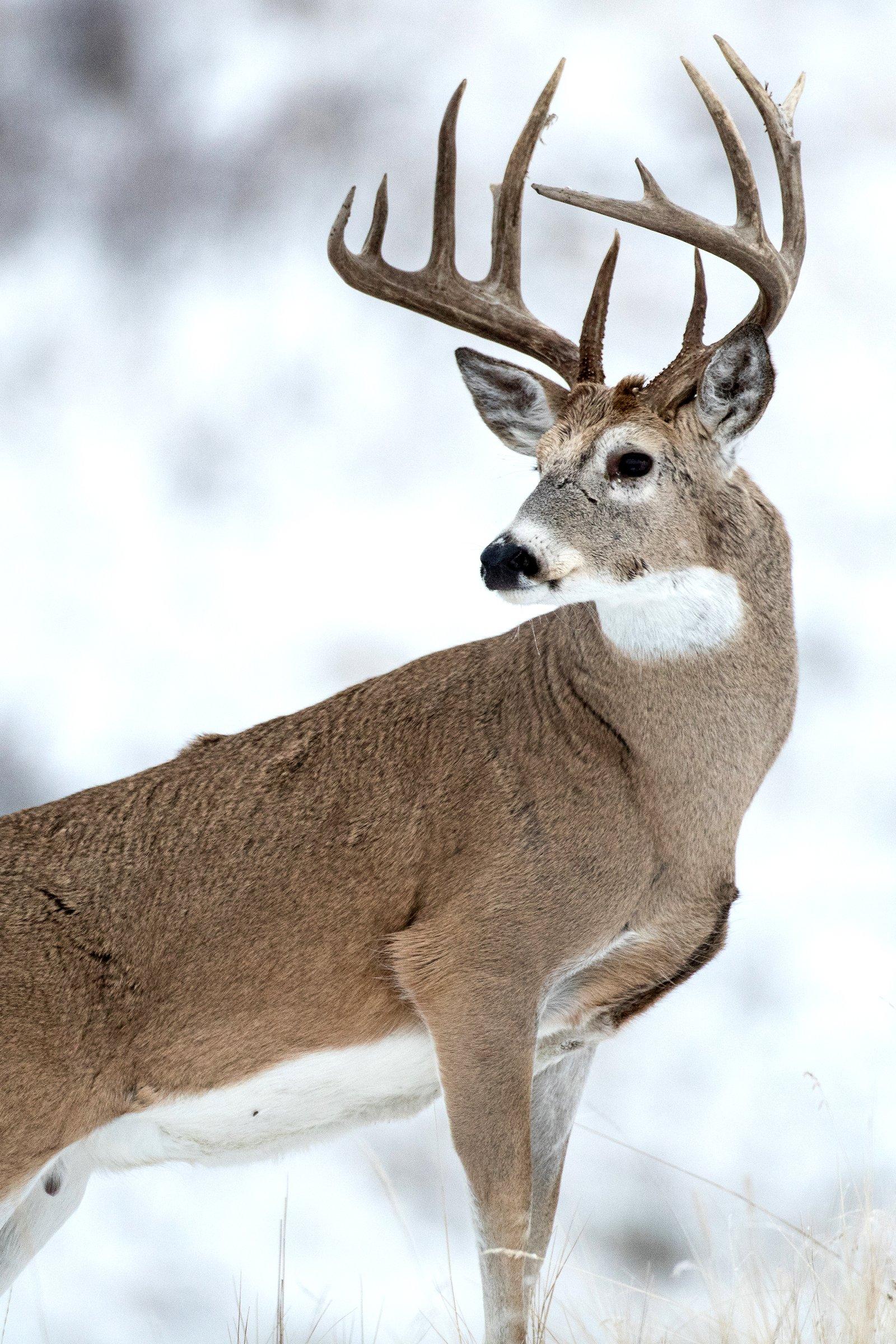
Deer hunting in the Northeast is challenging, but rich with tradition. Image by Russell Graves
You won’t find Maine, New Hampshire, or New Jersey topping the list of Boone and Crockett whitetail destinations. The hunting is hard in the Northeast, and bucks generally don’t sport racks of the same caliber as other parts of the country. But even with some downsides, the Northeast is loaded with die-hard hunters and steeped in hunting tradition.
The first day of Pennsylvania’s gun season is an unofficial holiday, and some schools close for the historic Monday opener. The Keystone State also has the highest hunter density in the nation, with Rhode Island and New York not too far behind.
Hunters in several Northeast states still can’t hunt on Sundays due to “blue laws,” so the woods are even more crowded on the six days of the week that they can chase whitetails throughout the fall. Still, some states in the region are posting record harvest and hunter numbers.
Even within the Northeast, tradition, tactics, and terrain can vary greatly.
From urban parcels to the North Woods, Northeast hunters are primarily chasing whitetails on either relatively small tracts of land or sprawling big woods. Either way, it’s a completely different game than posting up in a ladder stand on a 3,000-acre farm in the Midwest.
I’ve been hunting whitetails in Pennsylvania and neighboring states, both on public and private land, for over 20 years. I’ve experienced the frustrations and joys that come from weeks on stand in a region where a deer sighting is considered a great sit. It takes a special set of tactics to kill mature bucks here.
According to the experts, this is the best way to get it done in the Northeast.
Don’t Miss: HUNTER SHOOTS MONSTER BUCK AFTER HIS TRUCK BURNS DOWN
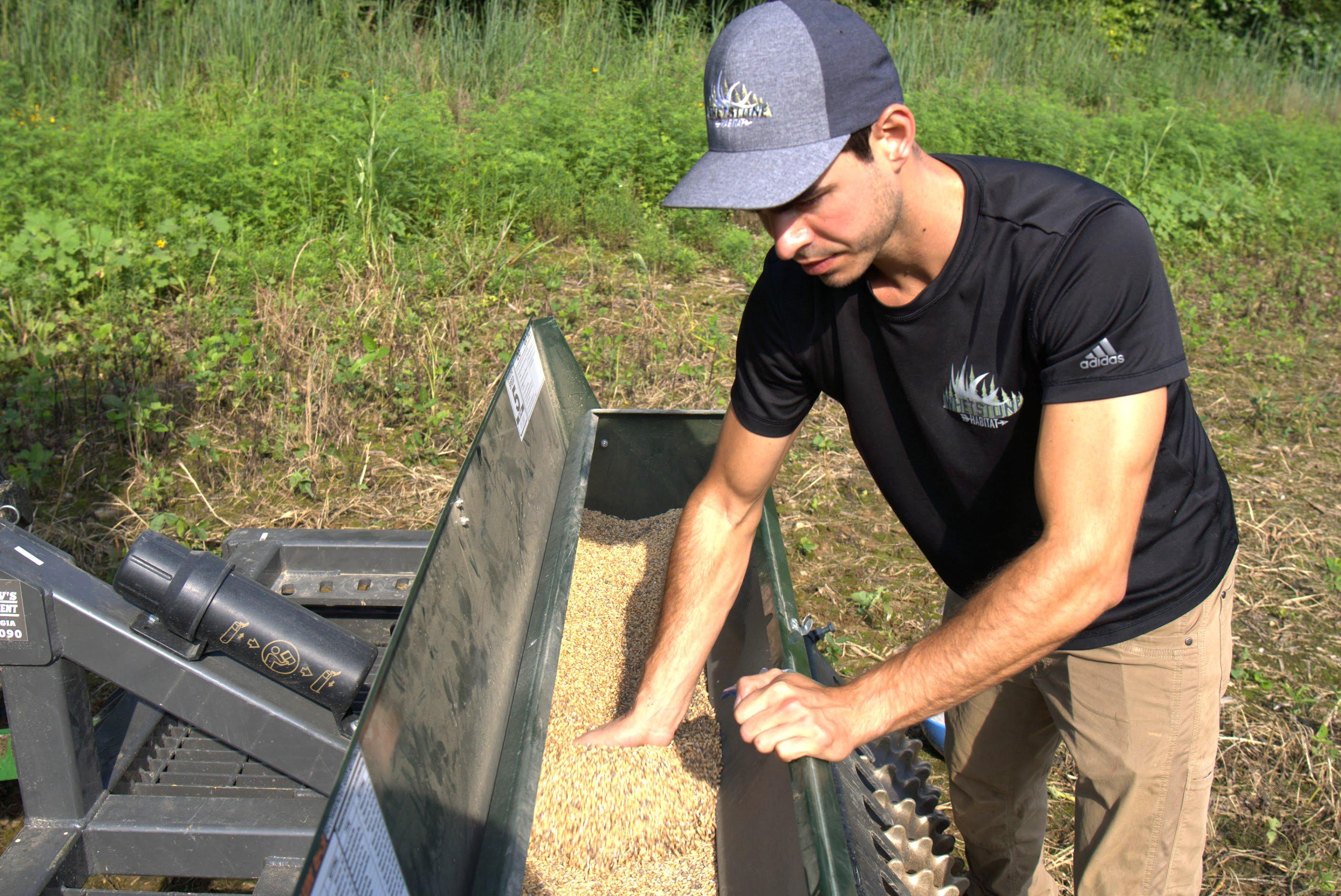
Zack Vucurevich of Whetstone Habitat preps for planting. Image courtesy of Whetstone Habitat
PLANTING FOOD PLOTS IN THE NORTHEAST
Zack Vucurevich, a wildlife biologist and the owner of Whetstone Habitat, says hunters who are able to manage the land they hunt in the Northeast should focus their efforts on developing diverse fall food plots.
“Across most of the Northeast, whitetails’ most severe nutritional bottleneck will occur between November and March,” he said. “With the bulk of crops harvested and the bumper crop of acorns quickly diminishing, deer must locate the most abundant food sources to survive the cold winter months. In areas that don’t maintain a snowpack throughout the winter, focus on providing diverse cool-season blends. Clovers, cereal grains, winter peas, and brassicas are all great components to consider.”
Vucurevich says it’s critical to plant blends that are rated for your hardiness zone. In areas such as the North Woods where winters are brutal, he suggests sugar beets, turnips, kale, forage rape, cereal rye, and red and white clovers.
But his general rule of thumb is to provide what the neighbors and the landscape aren’t.
“If you are in an area dominated by row crops, consider transitioning your food plot regime to include a higher component of fall forages or clovers. I plant diverse fall blends, usually including one or more cereal grains, clovers, as well as a few brassicas,” he said. “Diversity is crucial – with fall weather patterns becoming less predictable, you can save yourself the cost and frustration associated with food plot failure by planting a diverse blend of species, ensuring that at least a few of the crops you planted will germinate.”
Jason Say, owner and co-host of Wired Outdoors, also emphasizes diversity on his Pennsylvania hunting property, where he regularly kills monsters on his dozens of food plots.
“I’m a huge proponent of diversity. And when I talk diversity, usually I'm talking diversity within each plot,” he said. “I'm looking at how I can plant a food plot that is going to keep deer all the way from the early season to the late season. So it’s a combination. On one half of it, I may have a blend like Fusion from Whitetail Institute, which is chicory and clover and plant it with a nurse crop of oats — that’s really good in the early season. And then on the other side I’ll plant a blend like Beets and Greens or Tall Tine Tubers, which is a blend with brassicas, radishes, that’s great in the late season.”
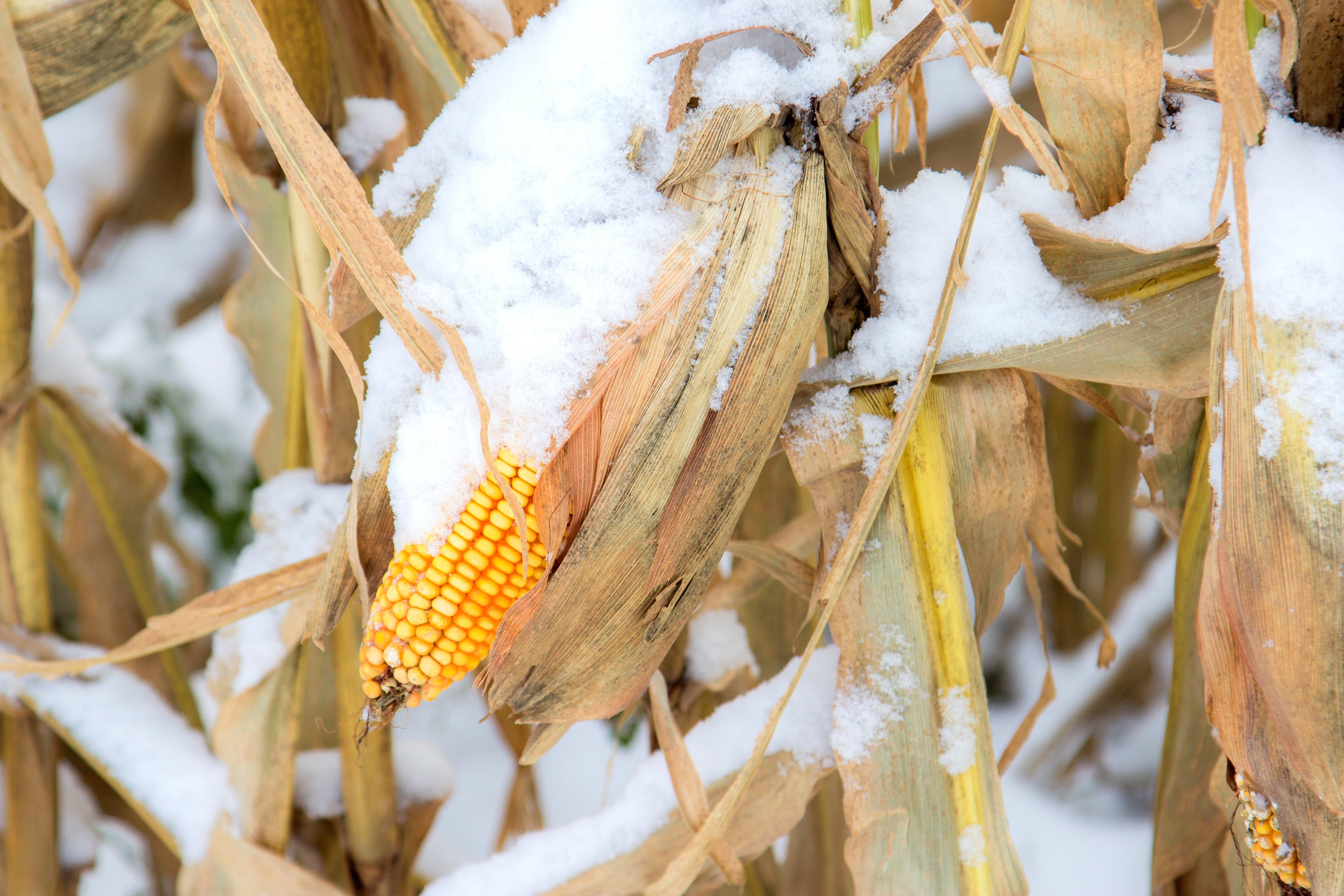
Never underestimate the power of a good late-season plot. Image by P Bouma
SUMMER SCOUTING IN THE NORTHEAST
Whether you’re faithfully planting food plots on private land or hitting public ground with thousands of other hunters, consistent success in the Northeast hinges on pre-season scouting.
Say says that smaller tracts of land and higher hunter density necessitate careful scouting and a willingness to reach difficult-to-access areas — the places mature bucks will seek refuge and other hunters won’t go.
“Big, mature whitetails are not around every tree in the Northeast,” he said. “You have to put your time in scouting”
Starting in July, he uses cellular trail cameras to take inventory and identify target bucks without disturbing their core areas.
“Then I’m really figuring out their pattern — what they’re doing, where they’re going, where they’re bedding — and putting those pieces of the puzzle together to develop a game plan,” Say said. “What’s that pressure going to do to these bucks? How am I going to set up a stand so that it may push them into my area, and I can hunt smarter? How can I be not on those property lines when at all possible? How can I hunt smarter than the neighbors?”
Another Pennsylvania native and co-host of Headhunters TV, Nate Hosie looks for three things when scouting in a region with such high hunting pressure.
“In the Northeast, I always try to focus on food sources, travel routes, and cover — where they are eating, where they are most likely bedding, and how they are making their way to and from,” Hosie said. “From there, depending on the terrain, I set my stands according to winds and the lay of the ground. For example, Pennsylvania has a lot of hills, so I always try to stay on top or at least the top thirds of a ridge to keep my wind from swirling and stay a little more consistent.”
Vucurevich says hunters should search for areas with varied terrain.
“Follow the logging trucks to find the ideal hunting ground in the Northeast. An aggressive, active forest management plan will be a hunter's best friend in a region so heavily covered with forest canopies. The plant communities associated with newly regenerating hardwood stands can rival food plots in tonnage of available nutrition/acre for deer,” he said. “My ideal hunting property in this region would comprise 50-75 percent woodlots, with the rest being a mixture of food plots and early successional habitats. Due to their vegetative diversity and structure, CRP fields, fallow crop fields, and recent timber harvests can all be productive areas to target.”
Whether it’s small suburban properties or big woods, hunters in the Northeast need to put in the miles to escape the pressure and find the deer.
Don’t Miss: WATCH A BUCK’S ANTLERS GROW
HUNTING THE EARLY SEASON
Archery seasons in the Northeast kick off as early as mid-September in Connecticut, Rhode Island, and New Hampshire, with the rest of the region opening within the next few weeks.
“If your season opens early enough to target bucks on their summer patterns, your best luck would be to pattern your target buck and wait for a good wind to make your move,” Vucurevich said. “The bucks have a predictable bed-to-feed pattern this time of year while they hang out in bachelor groups. Once the bachelor groups split up and the buck's testosterone levels continue rising, I would concentrate on water sources and unseasonably warm weather.”
Vucurevich also says it’s hard to beat a producing white oak stand during the early season on a good mast year.
“Add a water source to sweeten the pot. I don’t care how beautiful your food plots look – you won't compete with white oak acorns for a deer's attention,” he said. “Be prepared to hunt the resource while they last.”
Say and Hosie agree that the first days of the early season are your best bet for connecting with a target buck in the Northeast.
“In the early season, since deer aren’t traveling a ton, I try to set up in their home core areas near food and water sources — mostly afternoon hunting, not mornings, to keep from bumping them,” Hosie said. “It’s fresh. You haven’t been in and out and you haven’t alerted anything yet. The deer have felt no pressure yet and your intel hopefully lands you in the right stand to punch a tag.”
Say says it’s the prime time to target bucks before they go nocturnal.
“I put a lot of eggs in one basket,” he said. “Get on them early. If you get on a buck and you get him patterned that first week of the season, then you need to put 100 percent of your effort into killing that deer because he’s killable at that point in time, and it’s going to get tougher and tougher as the season goes on. In the early season, you control a lot more of the variables than you do in the rut.”
As Northeast bucks drop off those early-season patterns, they become much more difficult to hunt.
“Once the pressure comes, those big, mature whitetails are going to hit the deck,” Say said. “They’re going to go nocturnal, and they’re not going to move around as much.”
Some hunters simply sit out the “October lull” while others get more aggressive in the Northeast.
“The hunting culture in this region is strong. This means the limited public land available will have a high hunter density,” Vucurevich said. “Use this to your advantage; walk the extra mile. Get to your stand an hour before you usually would. Be mobile with your hunting strategy.”
You’re going to see a lot more bowhunters carrying climbers and saddles in the Northeast — not so many box blinds over bait (which isn’t even legal in much of the region).
Don’t Miss: 10 REASONS YOU WON'T KILL AN EARLY SEASON BUCK
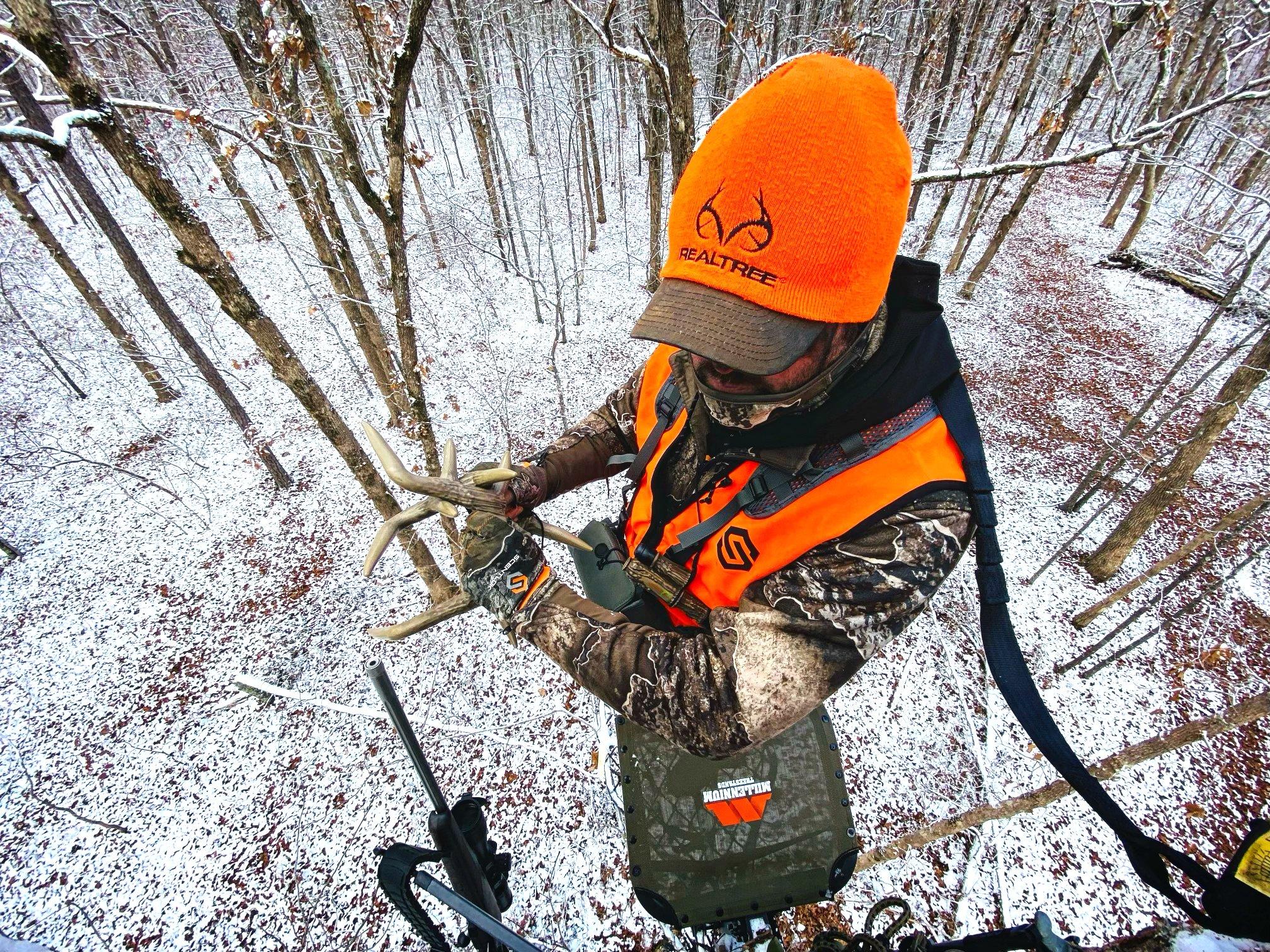
While deer might react less often, or be more cautious during approach, rattling can still work in the Northeast. Image by Nate Hosie
HUNTING THE RUT
“Deer across the Northeast do not have the drastic diversity in peak breeding dates as you see farther south,” Vucurevich said. “In general, most does will conceive during the second week of November, peaking around the 12-13th.”
Say still concentrates on food sources during the early pre-rut and employs mock scrapes to keep bucks coming back.
“As the season goes on and we head towards the rut, I focus a lot on travel corridors, food sources, and areas bucks will be cruising looking for does.” Hosie said. “It’s during this time of the season you need to log a lot of woods hours.”
After the first week of the early season, Say says the rut is the next-best opportunity to tag mature bucks in the Northeast because they get “a little dumber.”
“In the rut, you’re getting back near the thick stuff. Get them where they’re cruising through,” he said. “I have specific food sources that I call my rut plots that I do not hunt unless I’ve got a big buck in the early season patterned there. Those areas are consistently good in the rut. They’re ridgelines. They’re thick stuff where they're cruising looking for does.”
Similarly, Vucurevich positions his Northeast peak rut stands in spots where bucks will naturally funnel as they cruise.
“Hunting terrain features is my favorite tactic for the rut. Whenever you can find an area with three or more ridges converging on one peak (I call this a ‘spoke’), it is an excellent hunting area,” Vucurevich said. “Bucks will be cruising the crest of these ridges in search of receptive does. Saddles and pinch points are great terrain features to target as well. Look for fence gaps, rock ledges, creek crossings, and old logging roads to set up on.”
Christi Holmes, a Registered Maine Guide, and the founder of Maine Women Hunters, says the Pine Tree State is so thickly forested with very few ag fields that visibility is usually limited to 100 yards. So even November rifle stands will get you up close and personal with deer.
This only further necessitates practicing scent control and playing the wind. Vucurevich considers wind and thermals, but steers clear of any scents or calls when hunting in the Northeast, even during the rut.
“A common theme throughout the Northeast region is terrain features. Aside from the coastal plains, most of the region is hilly,” he said. “Mature bucks, especially, will utilize the thermals associated with hilly terrains.”
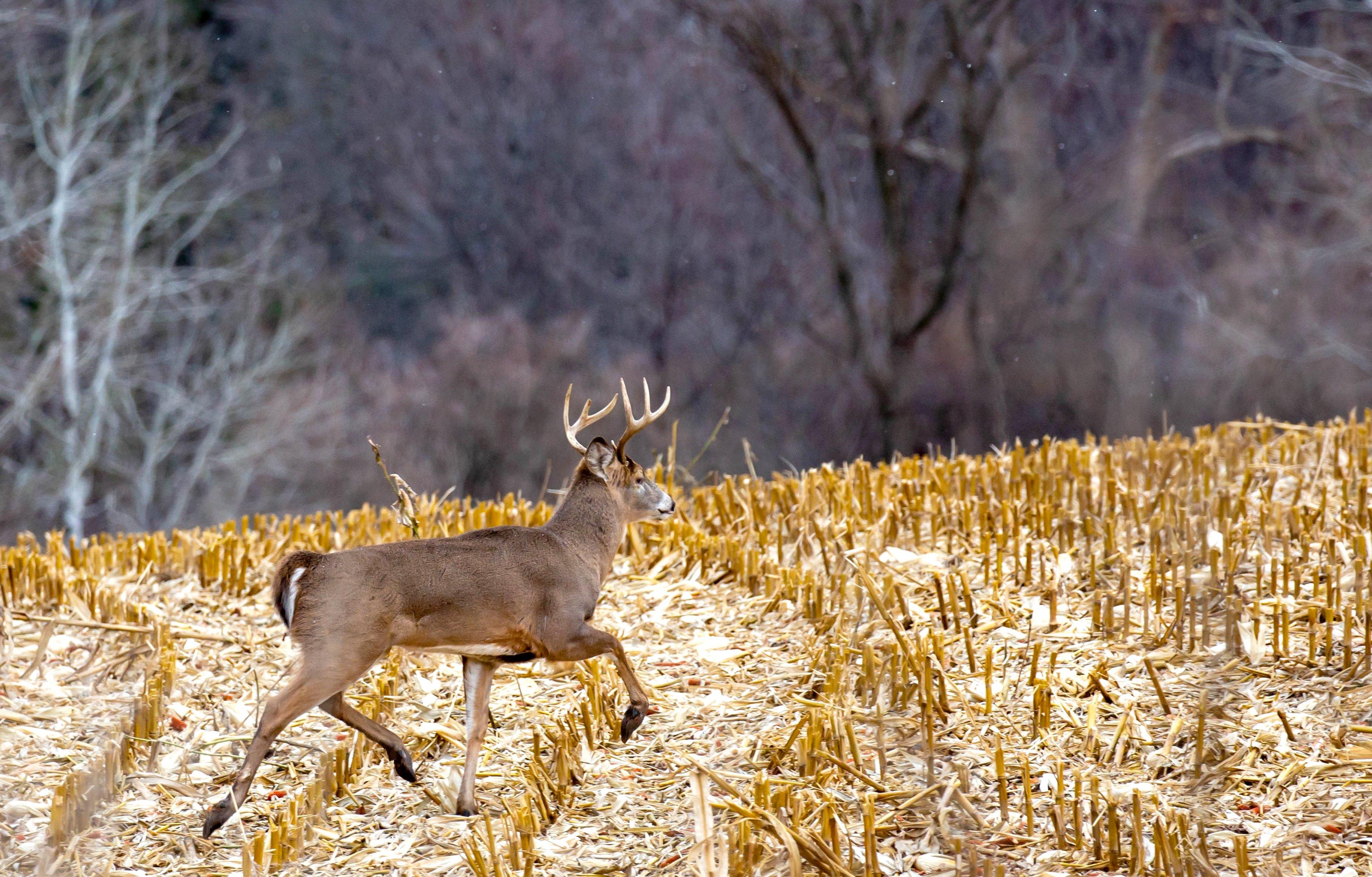
Ag fields make great spots to camp out during gun season. Image by Michael Tatman
HUNTING THE LATE SEASON
After regular firearms seasons, many Northeast states have late archery and special firearms seasons running from mid-December well into the new year. But deer have already been hunted hard by the late season.
“I see deer movement change drastically after the first few days of Pennsylvania rifle with the amount of hunters and shots going off,” Hosie said. “It’s like the deer know.”
By the late season, deer have been hunted hard. “Those bucks have been chased through archery season, through gun season. They’re not real daylighted at that time,” Say said. “You need to have a lot of lady luck at that point.”
Although the hunting is tough, Vucurevich says this is his favorite time to hunt bucks in the Northeast. “While the first week of November will likely be the most exciting time to be in the woods, I would choose a late-season cold front if tasked with killing a mature whitetail in the Northeast,” Vucurevich said. “Deer movement is more predictable, and they metabolically can’t afford to skip a meal if they wish to stay warm and replenish their reserves from the rut.”
He says standing grain or fall food plots that are still accessible to deer can be great, but even native browse can be enough to draw in bucks. “A whitetail can consume >80% woody browse during December-February,” Vucurevich said. “Don’t overlook recent timber harvests (within five years of logging) as productive destination food sources during the late season. Foods high in woody content (stems, buds, twigs) take longer for the deer to digest, keeping them warm throughout winter.”
While a lot of Northeast deer hunters stick to their treestands all season long, some try their hand at still-hunting or tracking in the late season, particularly in the North Woods where deer densities are lower.
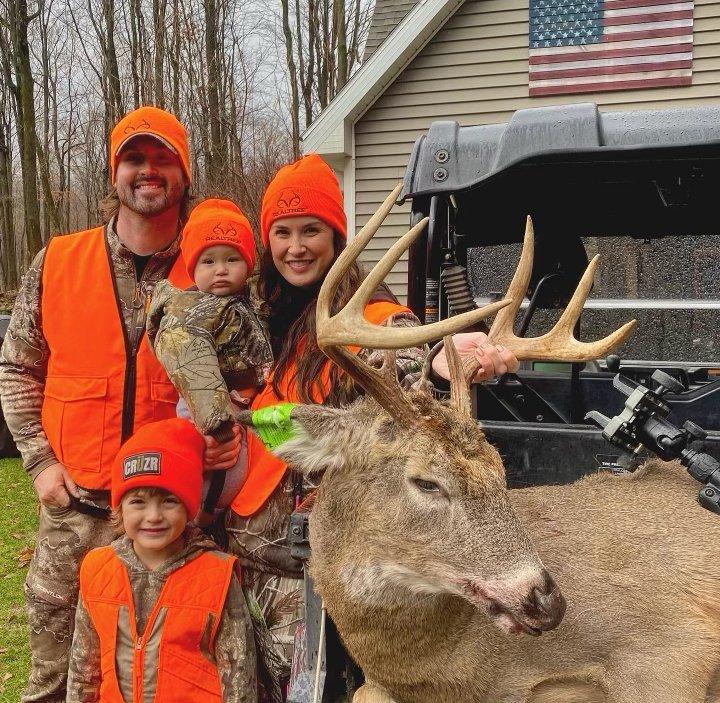
The Hosie family is all smiles with this great buck. Image by Nate Hosie
Tracking requires a few inches of fresh snow to leave discernable tracks — not feet of the white stuff or slick snow that crunches underfoot. Conditions need to be just right. Holmes says while she doesn’t use the tactic where she hunts in southern Maine, a lot of hunters, such as Master Maine guide Hal Blood, have success sneaking through snow in the northern part of the state.
They look for large tracks (measuring about 3 inches) about 6-8 inches apart from left to right and a gait of 8-12 inches with drag marks. This generally indicates the path of a mature buck.
Tracking in the snow should be done incredibly slowly and carefully — most hunters on the trail of a buck will only cover a few hundred hundreds over the course of hours while glassing ahead. Those big woods deer are less habituated than Midwest farmland deer and won’t tolerate much. But when the stars align, a hunter will get a shot off before the buck is alerted to his presence.
Another popular tactic in parts of the Northeast at the end of firearms seasons is the deer drive. After weeks or months of hunting pressure, deer can go on high alert and become tougher to kill. So, this is often a last-ditch effort for hunters to fill their freezers for the year ahead.
Deer drives can work with just a handful of hunters or dozens of bodies who walk through the woods, pushing deer to posters who are lined up and ready to shoot. It’s controversial and potentially dangerous if your orange army doesn’t know what they’re doing, but it can also be an effective strategy for hunters who are more concerned with filling tags than targeting a specific buck.
A well-planned drive will target thick cover where deer bed down and account for the routes they’ll take to escape the pressure. Natural funnels and draws can be great places to position posters to pick off fleeing deer.
From the North Woods of New England to suburban grounds in the Empire State, the Northeast is ripe with whitetail hunting opportunity for those with enough determination and woodsmanship to work for it.
Don’t Miss: HOW TO DEER HUNT IN THE SOUTH










